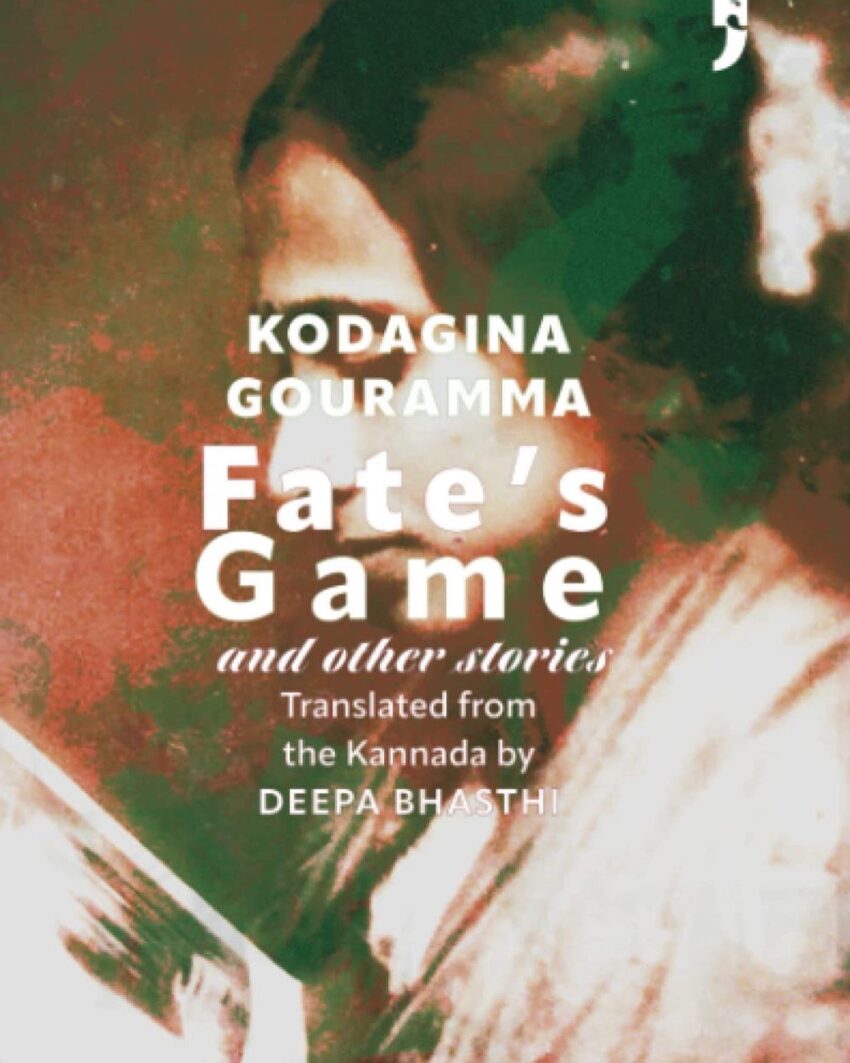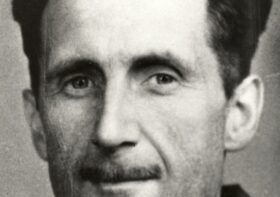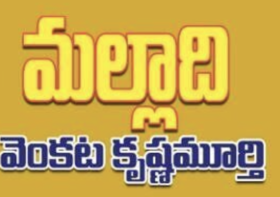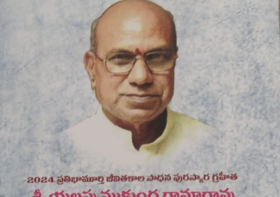Q&A with Deepa Bhasthi, Writer and Translator

Deepa Bhasthi is a writer based in Kodagu, southern India. Her essays on literature, politics, and cultural criticism have been published in over forty Indian and international magazines. Her English translation of Kota Shivarama Karanth’s novel “The Same Village, The Same Tree” was published in 2022. She recently published a translation of the short stories of Kodagina Gouramma, one of the earliest feminist writers in Kannada in the 20th century, as “Fate’s Game and Other Stories” (Yoda Press). She is currently working on translating the activist, advocate, Banday protest literature writer Banu Mushtaq’s short stories, for which she was one of the recipients of the inaugural PEN Presents grant from EnglishPEN.
This is an email Q&A with Deepa Bhasthi by pustakam.net.
******
On Background:
Q: Can you tell a little bit about yourself, your childhood, and how your literary interests developed?
I was born and raised in what was then a very small town called Madikeri in Kodagu district in Karnataka. Everyone knew everyone else, so it was both endearingly intimate, and rather claustrophobic growing up.
My district is known for producing coffee, and since my father is a coffee planter, I grew up on a farm as well. I am an only child, and given the large library my grandfather had left behind, I naturally became a voracious reader. My grandfather had been a Communist leader, and he had a huge collection of those old Russian literature books in translation published by Raduga, Progress Publishers, etc in the former USSR. I read a lot of Tolstoy, Dostoyevsky, Pushkin in my formative years, and that, I think, played a very big role in shaping my reading and writing interests in my adult years.
Q: How is the feedback for “Fate’s game and other stories” so far?
It has been good. I have had people tell me that they have enjoyed the stories, and are often struck by how relevant some of Gouramma’s stories, written almost a century ago, continue to be.
Q: You write a lot of non-fiction articles. What brought you into translation, and translation of fiction?
Given what a labour of love the practice of translation is, I am not sure how many of us pick it up as a conscious career choice. For me, it started with Kodagina Gouramma. I read about her first in 2012, and was appalled that even though I am from Kodagu as well, where there are less than a handful of writers, I had barely heard about her. I thought she deserved to be widely read, and decided to translate her work. Back then, I had no clue how to translate, or the huge responsibilities involved in this. When I was looking for a publisher for the book, I was asked if I wanted to do the Karanth book. I did not let go of such a great opportunity, and before I knew it, I had fallen in love with the practice.
Q: I did not read your translation of Karanth’s book, but I am a big fan of his works. Can you talk about your experiences with that book and the feedback you received so far?
It was extremely intimidating at first to be working on the book, because well, it was THE Shivarama Karanth. Admittedly, Ade Ooru, Ade Mara is not among his best-known novels, so a few pages in, the pressure I was putting on myself subsided, and all I saw was the text.
A lot of people I know have been kind enough to let me know their comments on the book. While I am very proud of having done this translation, I wish I had had the time to edit and proofread it better. But it was a learning experience I am very grateful to have had.
Process of translation and publication of the current book:
What was the language like in the original? Was it written in a specific dialect? What do you think a translator should do with dialects?
The language in Gouramma’s stories, surprisingly, is very contemporary, so I did not have any problems. What also worked in my favour is that I am from Kodagu myself, and am very familiar with the social milieu she writes about, the language she uses, etc. So I did not face any problems there.
Translating dialects is always challenging. I think how they are treated depends entirely on the choices the translator makes. Personally, I like to leave in a word or phrase here and there to at least suggest that it is a unique register of the language that I am working from.
Keeping dialects aside, even what is “standard” language must have changed in the decades after Gowramma’s time. Surely, there must have been words you did not hear before, or words that don’t have an obvious English equivalent. How did you address such scenarios?
To reiterate, her language is not that different from how we in Kodagu still speak Kannada. Plus, given my familiarity with the world she set her stories in, Gouramma’s stories are, when I look back, among the easier translations I’ve done. Plus, I had a good ten years to live with this project, chiefly because I was doing a whole bunch of other things in between. So I am sure the time factor also made it much easier for me.
How long did it take to translate this collection? What was your translation routine like?
Ten years from thinking about it to the time it was published! I did a few stories at first and kept them aside for years in between. I don’t imagine ever again giving myself that kind of time for any project. I like working in intense time blocks that can stretch on for weeks or months when I am immersed in the project all the time. So I ended up translating the final batch of Gouramma’s stories in about six weeks or so.
I found the fact that they exchange letters within hours on a given day in the first short story very amusing. As a translator, do you think about such things, and wonder how is this possible? As a reader, I definitely wondered about that.
Yes, I found that quirky too. Maybe they were leaving these letters by the bedside or handing it to each other? Maybe it was meant to depict a sense of urgency and the intense feeling the two characters had for each other? It is not my place as a translator to change anything about this, but yes, such things are indeed interesting..
I am assuming you read each story multiple times by now – do you sometimes feel like there is something new you find in a story despite those multiple reads?
With some stories, certainly. But what one must remember is that these stories were written by Gouramma when she was just starting out as a writer. So these are mostly straightforward. On the other hand, with Banu Mushtaq’s stories that I am currently working on, the nuances are sometimes so subtle that I am continuously on very high alert while translating them, should I miss anything out.
How is it like to work with the knowledge that we can’t ask the original author for clarification or explanation about something we don’t understand well?
I would have given anything to have been able to meet Gouramma. What a firebrand woman she must have been! It is certainly a disadvantage to work with a text by an author who is no longer alive. But then, one employs the knowledge and experience one has in language, the region, etc and tries to do one’s best with the translation.
How did you find your publisher?
The usual route of sending proposals.
What was the reviewing/editing process like for the translations you did? How do you see the role of an editor in a translation versus an original?
There was of course editing in terms of readability, etc. I think the responsibility of an editor is far greater when it is a translation because very often they are unable to read the original to compare the texts. There needs to be a higher degree of trust between the translator and the editor. Especially when it comes to some phrases and cultural references that the editor might not relate to, and is open to going with the translator’s expertise, even if it does not sound ‘correct.’ Translators, editors and readers too must understand that a book in translation cannot read like it was written in English in the first place. It is disrespectful to the original author to even expect that. Of course this does not mean the book should be full of terms that might alienate a reader. It is a fine balance.
What do you think a translator’s note should convey to the reader?
It should contextualise the writer’s works, both within the source language/region and wider literary history.
General:
What kind of books do you read in Kannada versus English?
Sadly, I don’t read as much in Kannada as I do in English. That said, I almost exclusively read fiction in Kannada, whereas in English, I am very very choosy about what fiction I read. I read a lot of non-fiction in English, mainly history, politics, essays, etc.
Who are the Kannada authors you would like to see getting translated to other languages?
Definitely more women, M K Indira, for instance. Also, a lot of foundational fiction, like the works of Kuvempu, Poornachandra Tejaswi, etc. need to be re-translated or translated effectively.
What kind of stuff do you think should be translated into Kannada from English or other languages?
Most certainly non-fiction. There are so many great books on politics, culture, history that are being published in English. A lot of people who read only in Kannada would benefit from having access to such books.
Is there some non-fiction from Kannada that you think should appear in English or other languages?
This would be a very long list! As it is there is so little being translated from Kannada into English, and the bulk of it is fiction.
What books from other languages did you read in translation that you liked very much?
I have read books in translation all my life, even before I began to note that they were in translation in the first place. I have way too many favourites, but apart from several of the amazing Indian works we’ve been getting in translation these days, I am currently enjoying reading the Egyptian writer Naguib Mahfouz’s Cairo trilogy, translated by William Maynard Hutchins and Olive E Kenny.
When we read new literature from other languages or cultures and we really liked it, we may think of our own language literature as lacking in such variety. Did you ever feel like that about Kannada?
Not at all. I think the world of Kannada literature is extremely rich, and can hold its own in comparison to any other language.
What are your future writing/translation projects, if they can be shared?
I am currently working on translating Banu Mushtaq’s short stories. She writes predominantly about the life of women in the Muslim community, but the themes she focuses on are universal, which makes her works extremely powerful. I am taking up Mogalli Ganesh’s works next – he is one of the last of the great Dalit writers in Kannada. Also in the queue is a novel I’m very excited about – Dr Sreedhara H G’s Chapada, which details the introduction of writing in what is now Karnataka by Emperor Ashoka, and the challenges involved for the sculptor. And then, some stories for a forthcoming anthology. Phew.
What are some resources you found useful as a translator?
Reading, reading, reading. I like to immerse myself in the theme, culture, or community or region where the works I’m translating are set. For instance, with Banu Mushtaq’s works, I have been treating myself to a lot of Urdu dramas, music, etc. and re-started my Arabic lessons – I started learning the language years ago. She uses a lot of Urdu and Arabic terms that I am not too familiar with, and surrounding myself with these helps me translate better. I do this very pointed reading too, and have been enjoying great literature that I wouldn’t otherwise have chosen to read.
******
Thank you, Deepa Bhasthi garu for answering this long list of questions patiently! – pustakam.net




Jeevan Stephen
nicely done
Sathyavathi
Interesting
S. Narayanaswamy
Very good interview.